Water meters of different types are available in the market – Positive Displacement, Electromagnetic, Ultrasonic, Single and Multi-jet and Turbine flow meters. Let us look at the differences in their principles of operation and their advantages and disadvantages.
Positive DisplacementDisplacement water meters are the most common water meters for residential and small commercial properties. They contain mechanical parts (an oscillating piston) that are displaced, or moved, as water flows through the meter’s main chamber. These moving parts measure the volume of water and increase the reading on the meter by respective amount.
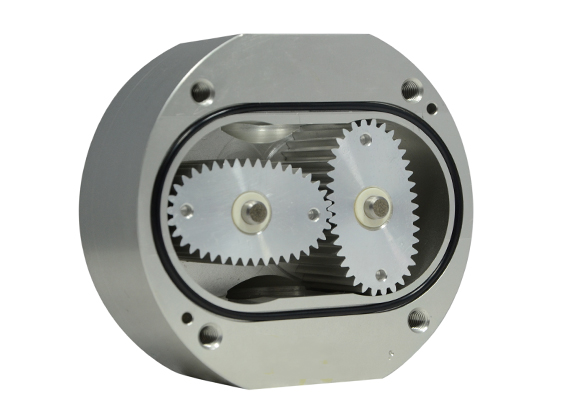
Since these meters come with moving parts: they are prone to failure, noticeable pressure loss, require frequent calibration, record air flow and reverse flow of water and therefore not accurate.
Electromagnetic Flow MeterElectromagnetic Flow meters are more common in the commercial and industrial buildings. Inside an electromagnetic flow meter, there is an electromagnetic coil that generates a magnetic field, and electrodes that capture voltage. The voltage sensed by the electrodes is processed by the transmitter to give standardised output signal or displayed in appropriate metering unit.
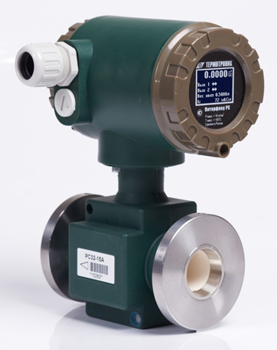
These are expensive units. Conductivity of the fluid flowing through the pipe must be higher so that magnetic coils can act as conductors. Bubbles of gas that form inside the meter can lead to error. Hence EM flowmeter requires electrical as well as mechanical cleaning at regular intervals.
Multi-jet Flow MeterMulti-jet meters are very accurate in small sizes and are commonly used up to 2inch sizes for residential and small commercial users. Multi-jet meters use multiple ports surrounding an internal chamber to create multiple jets of water against an impeller, whose rotation speed depends on the velocity of water flow.
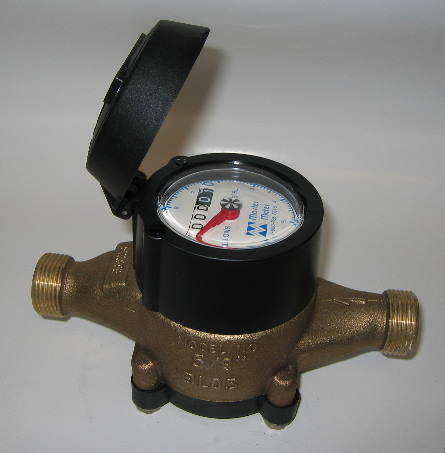
They do not in come in large sizes since they do not have the straight-through flow path needed for the high flow rates used in large pipe diameters. Prone to failure because of moving parts. They record airflow and reverse flow of water.
Turbine Flow MeterThey are commonly used in large commercial distribution system. Turbine meters are generally available for 1-½” to 12″ or higher pipe sizes. Turbine blades housed in the chamber rotates as the water flows through it. The velocity of turbine is proportional to the velocity of water flowing through it and generates voltage pulse which is a measure of the flow rate. The total number of pulses gives a measure of the total flow.
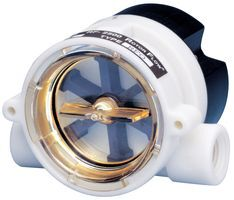
Turbine meters are less accurate than displacement and multi-jet meters. Long straight pipe sections are required to be installed. Requires periodic calibration. Prone to failures. Records airflow.
Ultrasonic Flow MeterUltrasonic flow meters come with two transducers which trigger sound waves. Sound waves determine the velocity of a water flowing in a pipe. Under no flow conditions, the frequencies of an ultrasonic wave transmitted into a pipe and its reflections from the fluid are the same. Under flowing conditions, the frequency of the reflected wave is different. The transmitter processes signals from the transmitted wave and its reflections to determine the flow rate. The signal provides the flow velocity and with the known tube cross section, the actual volume of water flowing through the sensor is computed.
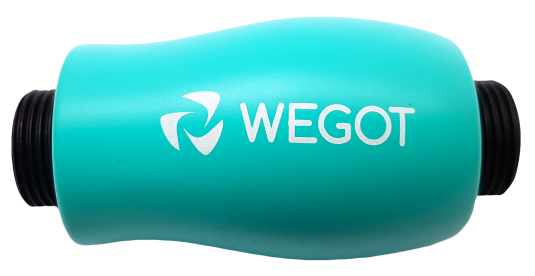
Since there are no moving parts, ultrasonic meters have long life and require no calibration. These meters have: negligible pressure loss, can measure extremely low flow of 0.1 LPM of water, accuracy >98%, can be installed in any direction, unaffected by air flow and reverse flow of water.
Because of all the above benefits, ultrasonic water meters have become extremely popular choice in the various applications of water metering. WEGoT is proud to be the only company in the India manufacturing its own ultrasonic water meters.
IoT enabled Ultrasonic Water SensorWEGoT Ultrasonic Water meters are called as water sensors since they have no moving parts, are IoT enabled and sends data to the cloud in real time. The real time data generated by the sensors are processed in our cloud sensors and accurate and reliable consumption data is made available to the end users. Since these are IoT enabled water sensors, sensor downtimes or failures are immediately notified. This allows service teams to immediately address problems therefore minimizing loss of data.

IoT enabled Ultrasonic Water Sensors are the way forward for mass and rapid deployment in residential and commercial segments and WEGoT will be the front runner in deploying these solutions across the country.
